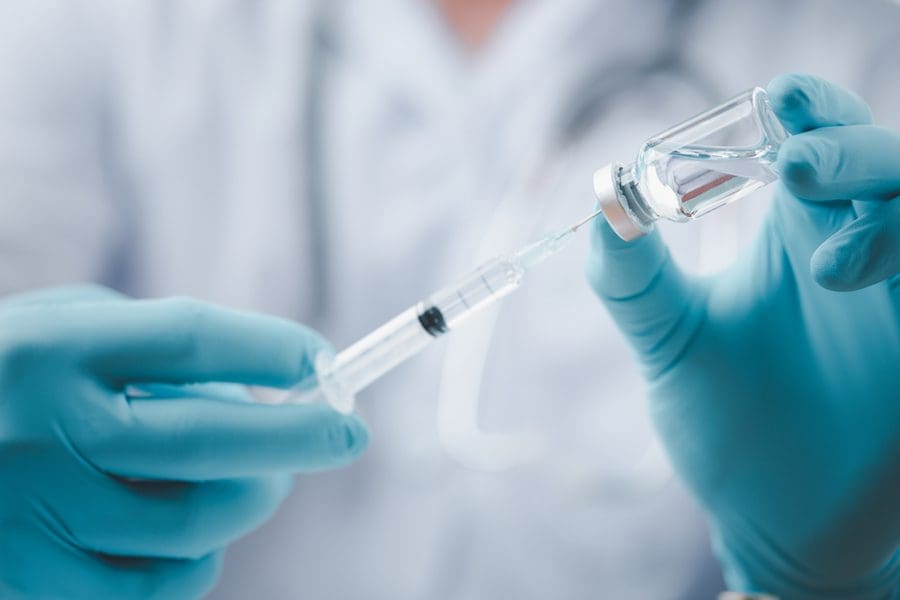By May 1st, all U.S. adults should be eligible for the COVID-19 vaccine. While we await our shots, it’s important to be aware of potential side effects of the vaccine.
This checklist will help you know what symptoms to keep an eye out for after the big day, as well as how to manage side effects of the vaccine at home. Try to stock up in advance to make the process as easy as possible.
Common Side Effects of the COVID-19 Vaccine
Some people do not experience any side effects after getting the COVID-19 vaccine. Others have minor side effects but are still able to go about their daily activities. And others might have side effects that require some downtime.
Side effects are typically a good sign: they mean that your body is working to build up immunity to the COVID-19 virus. However, if you do not have side effects, that does not mean the vaccine is not working.
Some of the most common side effects of the COVID-19 vaccine, according to the CDC, include:
- Pain, swelling, and redness at the injection site
- Arm soreness (as a result of the needle going into the muscle)
- Rash on the arm
- Fatigue
- Headache
- Muscle pain
- Fever and/or chills
- Nausea
These symptoms may or may not limit your daily activities but should go away in a few days maximum. Regardless, if you want to protect yourself and others, it’s an important step to get the vaccine.
Serious Side Effects
According to the CDC, serious side effects from the COVID-19 vaccine are rare. Severe allergic reactions, including anaphylaxis, can occur after any vaccination, so it’s important to stay where you got the vaccine for 15-30 minutes in case of a reaction.
If you have anaphylaxis, or an allergic reaction to the vaccine such as hives, swelling, or wheezing, it is recommended that you do not get a second shot. If you get a rash at the injection site, you should still get the second shot.
For those who have an autoimmune disease, HIV, or a weakened immune system may receive the COVID vaccine, but, the data is not available yet about potential reactions to the vaccine. It’s important to make the best decision for yourself, and continue taking all COVID precautions. (For more info from the CDC, click HERE)
How to Manage COVID-19 Side Effects
The side effects of the COVID-19 vaccine are usually mild, but they might be uncomfortable or prevent you from going about your usual daily activities. You can manage them at home with some tips from the CDC and Geisinger Health:
- Arm soreness: To manage soreness at the vaccination site, the CDC recommends using a cool or warm washcloth to alleviate pain. Moving and exercising your arm may also help.
- Fever & chills: The CDC encourages people to drink plenty of fluids and dress in light clothing to manage fever. Geisinger Health also suggests taking acetaminophen (Tylenol) every 4-6 hours to reduce your fever.
We recommend keeping a heating blanket nearby if you experience chills. Its an easy way to manage any hot/cold flashes.
- Headache & muscle aches: You can take acetaminophen every 4-6 hours to alleviate headaches and muscle aches. Geisinger Health also recommends taking a warm bath with Epsom salts for muscle aches.
Checklist
Before your appointment, you should have these items on hand at home to take care of yourself in case you experience symptoms from the COVID-19 vaccine.
✓ Warming blanket
✓ Fluids like water, electrolyte sports drinks, or tea
✓ Epsom salts
✓ Fever-reducing medication, such as acetaminophen (Tylenol)
✓ Bland, easy-to-eat foods, like soups and gelatin (in case you feel nauseous)
After the Vaccine
Once you have been fully vaccinated (i.e., received both doses of the Moderna or Pfizer vaccines or the single-dose Johnson & Johnson vaccine), and waited for 2 weeks after that, you may be able to start doing some things you stopped doing during the pandemic. For example, you and other fully vaccinated people can gather indoors without a mask, and you can be inside with unvaccinated people from one other household.






